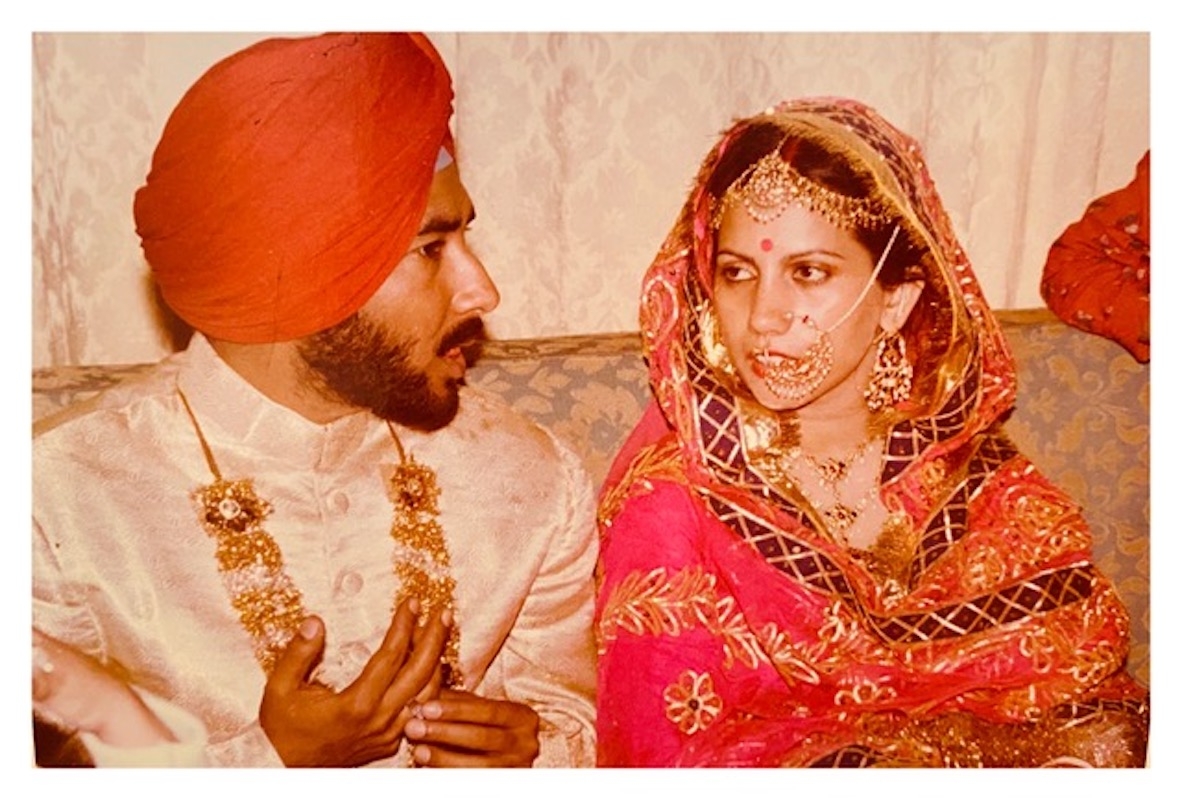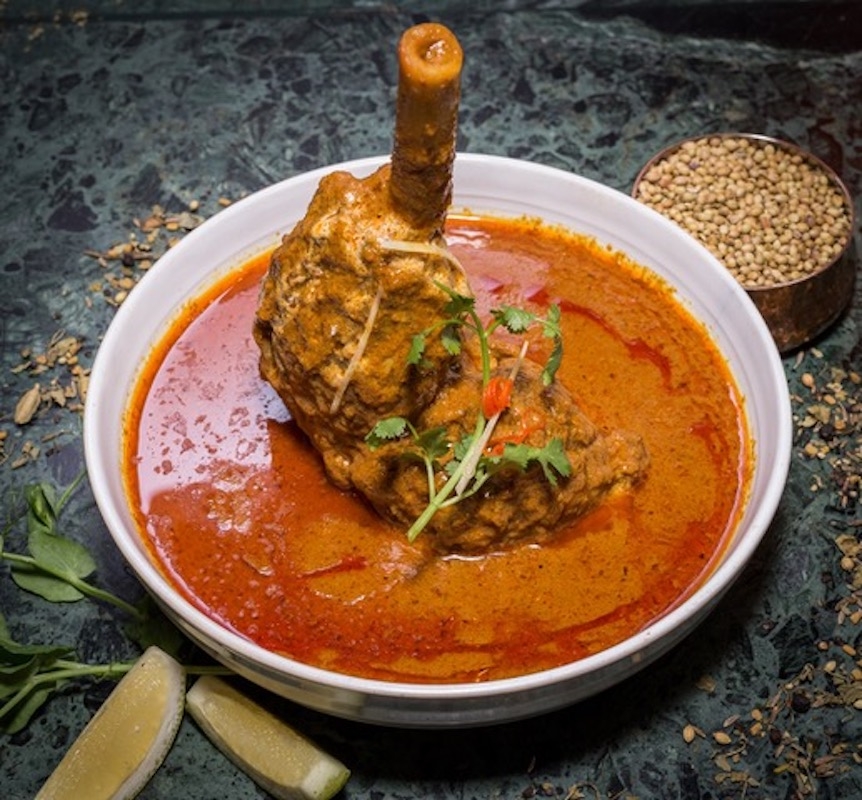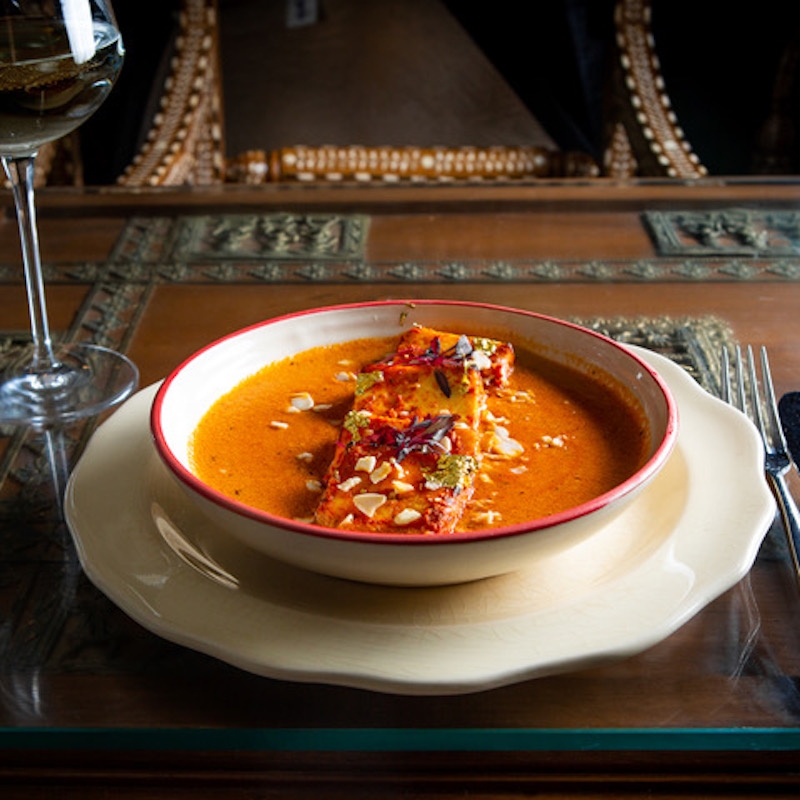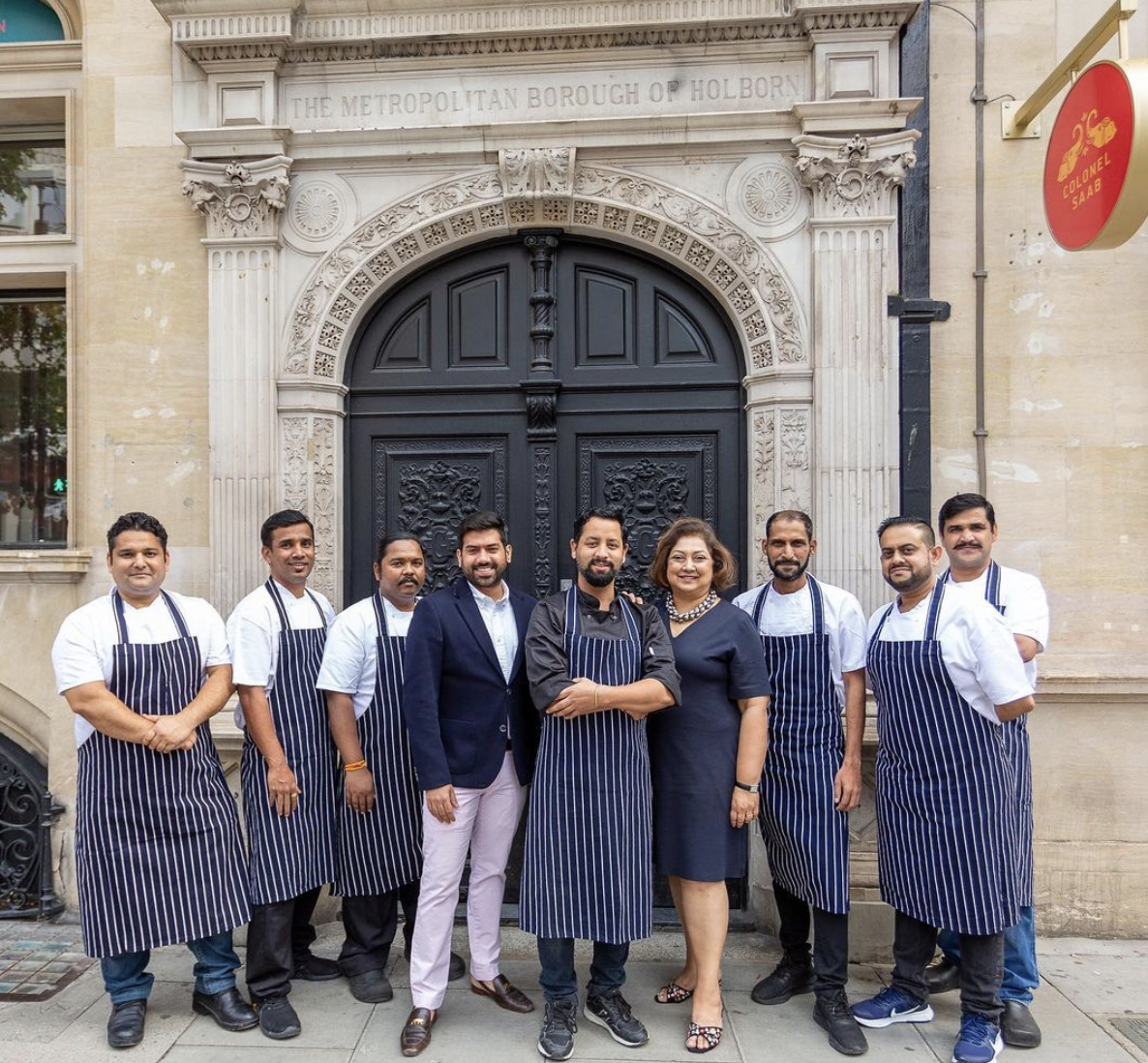Interview
An ode to India’s little-known regional Christmas staples
21 Dec 2021
6m
Restaurateur Roop Partap Choudhary has the unique experience of having grown up celebrating Christmas all around the Indian subcontinent.
The son of Indian hoteliers Colonel Manbeer Saab and Mrs Binny Choudhary, he was travelling from the age of four until he reached early adulthood, and was subsequently immersed into communities everywhere from the Sri Lankan border to the edge of Pakistan.
The family’s nomadic tradition begun even before Roop was born. His father (and namesake of his new Holborn eatery, Colonel Saab) was previously a decorated member of the Indian Army, meaning that he and Binny spent several years travelling up and down the country, meeting locals and developing a knowledge of India’s cultural landscape that few could rival.
 Colonel Saab and his wife, Binny (Credit: Handout/ Roop Choudhary)
Colonel Saab and his wife, Binny (Credit: Handout/ Roop Choudhary)
READ MORE: What food do people eat on Christmas Day around the world?
In the 90s, as their hotel empire grew, they imparted the same experience onto their son, moving him from village to village every two years or so.
”I got to grow up with a lot of people who were completely different to me ethnically,” Roop tells Twisted, as he looks back on his childhood. “Everywhere I went, the weather was different, the language was different, the culture was different and the traditions were different.
“But also what was on the table was different, and those regional dishes I ate growing up are still engraved in my mind, today”.
Perhaps surprisingly, given his Sikh upbringing, Roop explains that many of his most palpable food memories were formed over Christmas-time.
 Roop Choudhary with his dad, Colonel Saab, as a young boy in India (Credit: Handout/ Roop Choudhary)
Roop Choudhary with his dad, Colonel Saab, as a young boy in India (Credit: Handout/ Roop Choudhary)
This is primarily because before he was born, Christmas was such a pivotal time for his mother, who was often a newcomer in whichever tight-knit local community she was living whilst Colonel Saab was posted with the army.
“My mother would generally have been in very small cities or villages, where the only method of celebrating Christmas was actually being invited to every neighbour’s house, 20 or 30 days before [Christmas Day],” he says.
“Every neighbour would put together some sort of dish and share their traditions,” and Binny never forgot the food (or indeed the people) that she came across.
Roop tells of how his mother was determined to continue this ethos of festive generosity thereafter – especially when it came to food – and would regularly entertain locals wherever she was living.
“When she was in a city that didn’t have any Christian population, she would call the Muslim and Sikh families to be a part of her tradition,” he says.
“She’d tell them, ‘this is Christmas and you need to bring something to the table’. So, somebody would make soup, somebody would make cumin naans, and before you know it there was a big, hefty table.
“[Christmas] was all about making sure that your table is open to whoever was a part of your life,” he adds. “That’s something that has always stayed with me”.
 Roop and his mother Binny (Credit: Instagram/ Colonel Saab)
Roop and his mother Binny (Credit: Instagram/ Colonel Saab)
READ MORE: Check out Twisted’s recipe for a Christmas Biryani
Inspired by the kind and welcoming nature of the locals his mother had met, Roop’s childhood Christmas Day would usually consist of around 10 families coming together to share a “pot-luck buffet” of regional Indian delights, often made with the finest local ingredients, which they had been saving for up months.
“What was fascinating is these ingredients [varied] so drastically across India,” he says – and having travelled so extensively, Binny had picked up a unique knowledge of how to cook with most of them.
“I remember my mother used to be posted in a place called Kashmir, which is right next to the Pakistan border.
“There wasn’t seafood… no river or anything like that, so she would make this Sunday lamb curry for all of us, which was basically made with mutton marinated overnight in in 10 different spices,” he says.
“Then, when she was posted down to South India she couldn’t find lamb, so she started making grilled fish as a part of her Christmas tradition. She would make these [into a] moilee, which is basically a coconut based curry.
“Today, in places like Calcutta, which used to be a British colony and still has a lot of nuns and Catholic influence, it’s still a tradition to eat fish curry for their Christmas”.
 Binny’s traditional Sunday lamb curry (Credit: Colonel Saab)
Binny’s traditional Sunday lamb curry (Credit: Colonel Saab)
Another culinary memory the restaurateur has is of the vegetarian food his mother would make during the holiday season.
“Our nation is a very vegetarian eating nation, because it’s predominantly Hindu,” he explains. “So, my mother would often host a lot of people who wouldn’t eat chicken or seafood.”
For them, Binny would make “pakeeza paneer” – a dish she learnt when living in Goa in the mid-60s, made of Indian cheese, Feni (an Indian liqueur) and cashew nut paste, garnished with gold leaf “to give a proper Christmas feel”.
“Goa was a Portuguese colony, and when she was there, my mother learnt a lot of recipes from Catholic families,” Roop says. “This is a dish I particularly remember her making at Christmas for people who weren’t meat-eaters.
“It was extravagant, but then that was Christmas. It was something special that I would look forward to over the holidays”.
 Colonel Saab’s take on the Pakeeza Paneer (Credit: Colonel Saab)
Colonel Saab’s take on the Pakeeza Paneer (Credit: Colonel Saab)
Gold leaf was also used when Binny grilled lobster over the holidays, if the family was staying in an area where they couldn’t access meat for her Sunday lamb. One dish his mother regularly made was inspired by Malabar, a region on India’s southwestern shoreline, and also featured cashew paste in its base.
“[Seafood] is something that the Catholic and Protestant families in in the areas of South India have been eating for a century,” Roop explains.
“But these are things that are so unheard of in Western countries, because everything is so much to do with your typical gravy curry that people don’t actually value a lot of these dishes that have huge significance to people from those regions”.
This in itself is why Roop decided to set up his first London restaurant, Colonel Saab, in London’s Holborn Town Hall.
Decorated with artefacts the family has picked up on their travels, the restaurant is an ode to the corners of India that many of us have never had the fortune to visit, and the foods enjoyed by locals there.
With a corker of a menu designed in collaboration with Dishoom’s Karen Anand and, of course, his mum, Binny, Roop tells us: “Colonel Saab is not only a homage to my family, but it was also culmination of my entire childhood”.
READ MORE: Chef Will Bowlby reveals secret to making his Indian fried chicken
 The Colonel Saab team alongside Roop Choudhary and Dishoom’s Karen Anand (Credit: Instagram/ Colonel Saab)
The Colonel Saab team alongside Roop Choudhary and Dishoom’s Karen Anand (Credit: Instagram/ Colonel Saab)
The Christmas menu exemplifies this. Up until the 24th December, you can order Malabar grilled lobster with moilee sauce, pakeeza paneer with gold leaf and a Sunday lamb curry with saffron pulao, in honour of the dishes Roop’s mother fed him on Christmases gone by.
Forget your standard Chicken Korma, if you want a glimpse into India’s regional delicacies, then Colonel Saab’s festive offering seems like the perfect place to start.
And if you can’t make it down there in time? Try knocking together the pakeeza paneer for yourself:
Colonel Saab’s Pakeeza Paneer recipe
Ingredients
- Refined oil (50 ml)
- Green cardamom (2 pieces)
- Cinnamon stick (1/2 stick)
- Bay leaf (1)
- Clove (2)
- Ginger (50 grams)
- Garlic (50 grams)
- Tomatoes (500 grams)
- Cashew nut paste (50 grams)
- Almond paste (50 grams)
- Natural yoghurt (50 grams)
- Salt (10 grams)
- Kashmiri chilli powder (10 grams)
- Garam masala (3 grams)
- Honey (10 grams)
- Butter (20 grams)
- Butter and cream mix (20 grams)
- Kasuri fenugreek (2 grams)
- Roasted paneer (150 grams)
- A dash of various spices (coriander, degi mirch, green chilli, coriander roots)
- Almond flakes and gold leaf for garnish
Method
- Use a heavy bottom pan put refined oil, add whole spice (green cardamom, bay leaf, clove, cinnamon stick)when it’s start crackling then add ginger garlic paste cook for 3 min on medium heat.
- Add whipped yogurt and tomato paste cook for 15 min.
- Make a separate paste of cashew nut, blanch almond, brown onion and put in the pan after cooking of yogurt base.
- Add some powder spices – coriander powder, degi mirch, salt, and green chilli, coriander roots.
- Add some water and cook for min 30 min on medium heat.
- Strain the gravy and add some cream, butter, sugar or honey.
- Finish the gravy and add roasted paneer tikka on top of that.
- Garnish with almond flakes and gold leaf.

.jpg_RVG9qi?tr=w-2560,f-webp,q-70)
.png_2XIXGj?tr=w-2560,f-webp,q-70)
.jpg_qa3BF9?tr=w-2560,f-webp,q-70)